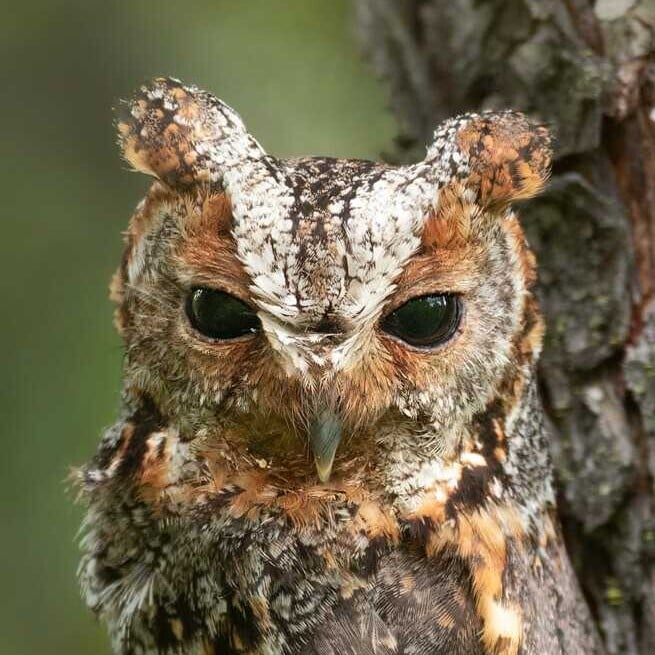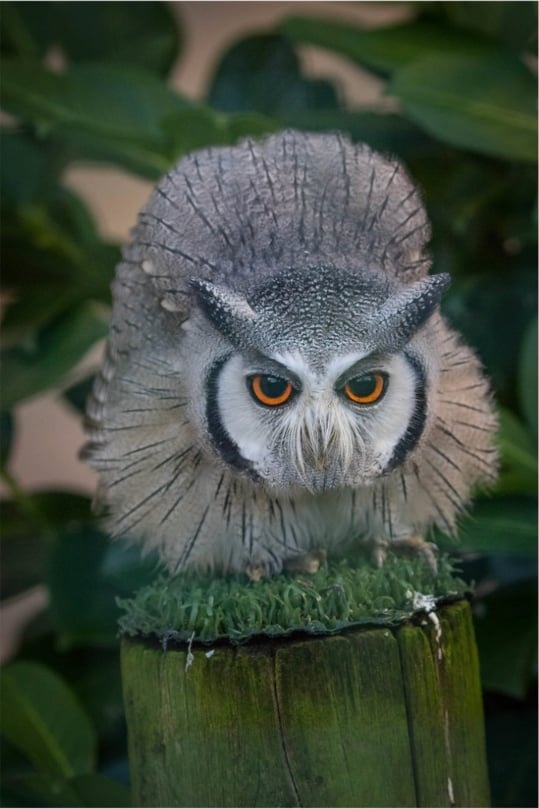From New Mexico Wildlife Center
19 FEB How it started:
One of the patients that came to our hospital last week is a member of a species that has not been admitted to NMWC since 2018: meet Northern Saw-whet Owl 24-40! While 24-40’s species was a bit surprising for us to see, the reason he was admitted is a very common one for owls and other raptors: 24-40 was hit by a car.
24-40 was, however, relatively lucky: he hit the windshield of a vehicle that was traveling slowly, which reduced the severity of his injuries. After the collision, the driver immediately stopped the car to rescue the tiny owl from the road, kept him in a dark and quiet place overnight, then brought him to NMWC the next morning. Careful driving and quick intervention probably helped to give 24-40 an encouraging prognosis! The owl has some bruising on the back of one eye and a mild concussion, but so far he is recovering well.
Vehicle collisions are a common cause of injury for a lot of raptor species and other wildlife. Often, small animals like mice and rats are attracted to discarded food and trash that accumulates on roadsides when people toss things out of car windows. An apple core or piece of bread that gets thrown onto the side of the road might be biodegradable, but it probably wont even have a chance to be broken down before some small animal comes along to snack on it. However, the presence of prey animals close to roads also attracts predators, who are more likely to fly or run into the path of oncoming traffic. One way to protect all wildlife, especially birds of prey, other predators, and scavengers, is to keep roadsides clean and make sure trash finds its way into a trash can or compost bin!
27 FEB What happened:
Northern Saw-whet Owl 24-40 has been released! He flew away so fast that we weren’t able to get it on video, but this small and feisty owl recovered well from his vehicle strike injury and was released right near his rescue location earlier this week. Northern Saw-whet Owls can be found in some parts of New Mexico, primarily at higher elevations, year-round, although throughout much of the United States they are a migratory species and spend the winters farther south before flying back up to northern latitudes to breed in the spring. They can be very difficult to spot in the wild, thanks to their very small stature (24-40 weighed about as much as two golf balls) and excellent camouflage. Northern Saw-whet Owls typically live in forested areas away from a lot of human traffic, which sounds like a great place to be if you want to stay hidden and eat a lot of mice!



He was the biggest sweetie really. Just did not like other cats in his yard.
I did have to put up cardboard along the bottom of our slider to keep the one cat from going nuts. I forget which one now. We named the outside cat before it eventually became our cat, and as much as the one cat hated it, the dog loved it! I’d call out the outside cat’s name and the dog would bolt from across the house and stand up on her stubby hound legs and peer out over the cardboard.